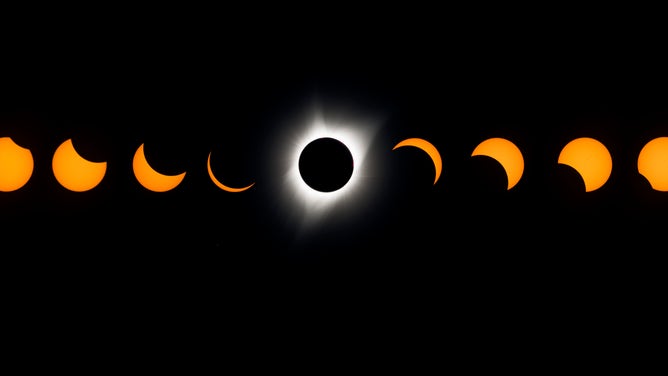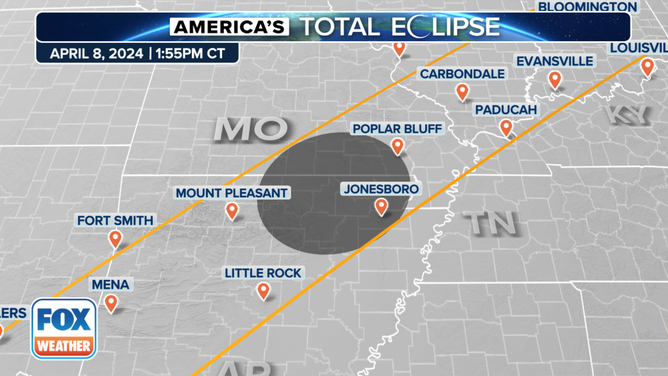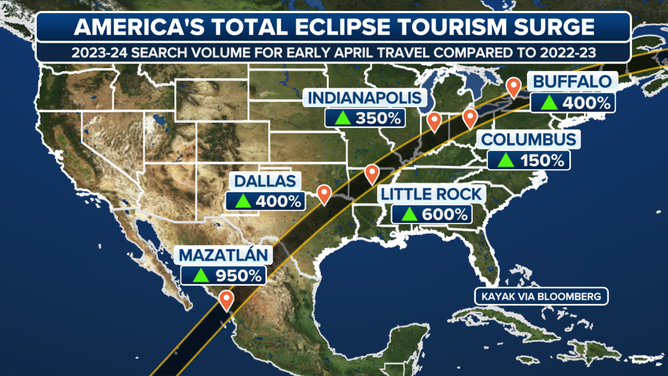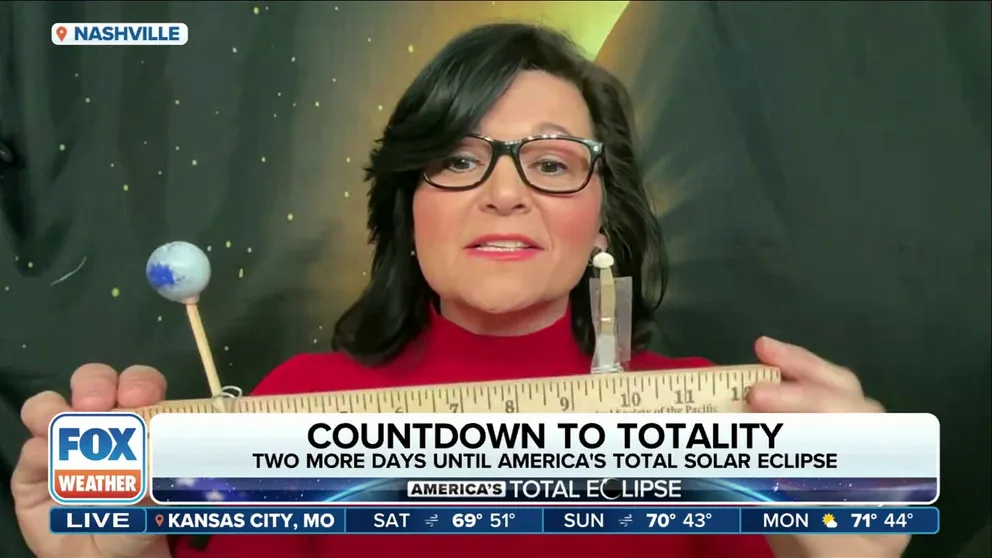Where to see the total solar eclipse in Missouri on April 8th
On April 8th, a total solar eclipse will sweep from Texas to Maine, offering millions the chance to see totality. Here’s what you need to know about viewing the eclipse in Missouri.
Why is Monday's total solar eclipse so special?
The wait is over to view America's total solar eclipse in just two days. The sky will go dark along the path of totality, an event that won't be seen again for 20 years. Janet Vivey from Janet's Planet joins FOX Weather to discuss this rare celestial event.
From West Plains to Cape Girardeau, a stretch of over 115 miles in south and southeastern Missouri will have a total solar eclipse viewing window from 1:55 p.m. to 2:04 p.m. CT on April 8th when the Moon blocks out the Sun, casting part of the Show Me State into temporary darkness.
FOX WEATHER WIRE LIVE COVERAGE: TOTAL SOLAR ECLIPSE APRIL 2024
Here’s what you need to know about viewing the eclipse in Missouri.
What is a total solar eclipse?
A total solar eclipse happens when the Moon passes between the Sun and the Earth, completely blocking the face of the Sun for several minutes.

A composite image of the total solar eclipse seen from the Lowell Observatory Solar Eclipse Experience August 21, 2017 in Madras, Oregon.
(Stan Honda / Getty Images)
From partial eclipse through totality, the process takes several hours. The final moments before totality include displays of light known as Baily's Beads and the Diamond Ring caused by the pock-marked surface of the Moon.
Where can I see the total solar eclipse in Missouri?
The path of totality will sweep across the southeast corner of the Show Me State from the Arkansas-Missouri border, beginning near Gainesville and exiting Missouri to the northeast near Cape Girardeau and the Illinois state line.

Total solar eclipse path for Missouri on April 8, 2024.
(FOX Weather)
Residents and visitors in Popular Bluff will have a prime opportunity to witness the total eclipse.
What time is the solar eclipse in 2024?
A total solar eclipse is an hours-long event from partial eclipse through totality and partial eclipse again. However, totality will last between a few seconds to over 4 minutes, depending on where you are within the 115-mile-wide path of totality.

HOUSTON, TEXAS - OCTOBER 14: Astronauts answer questions via live video feed from the International Space Station in the background as people view the eclipse during the Space Center Houston Annular Eclipse Celebration and viewing event at NASAs John Space Center Saturday, Oct. 14, 2023.
(Kirk Sides/Houston Chronicle via Getty Images / Getty Images)
The first signs of the crescent of a partial eclipse in Missouri will happen near Thayer at 1:22 p.m. CT with totality at 1:54:20 p.m. The city will see 3 minutes 58 seconds of totality and the final partial eclipse ending at 2:29 p.m. CT.
In Doniphan, totality lasts more than 4 minutes. The partial eclipse begins at 1:23 p.m. CT and totality starts at 1:55:28 p.m.
Being closer to the center of the path of totality, Marble Hill will also have over 4 minutes of near darkness. Totality begins at 1:57:36 p.m. and ends at 2:01:47 p.m. In Perryville, totality also begins just before 2 p.m. and ends just before 2:02 p.m.
What will the weather be like in Missouri for the eclipse?
A clear sky is key to watching a total solar eclipse.
TOTAL SOLAR ECLIPSE LIVE TRACKER: CLOUD FORECASTS FOR CITIES, STATES IN PATH OF TOTALITY
The FOX Forecast Center has put together the cloud cover forecast shown on the map below, showing areas with an overcast sky, many clouds or few clouds during the eclipse. As the eclipse nears, computer forecast models will improve and be able to give forecasters a better idea of what the sky will look like on the big day.

(FOX Weather)

(FOX Weather)
Below is a look at what to expect in the hours before and after the eclipse in Cape Girardeau, Missouri.

(FOX Weather)
TOTAL SOLAR ECLIPSE FORECAST SHOWS WHO HAS BEST CHANCE FOR CLEAR SKIES ON APRIL 8TH
Check back with FOX Weather for updates to the forecast as the date of the eclipse approaches, and add your viewing location to the "Events" tab in the FOX Weather app.
What to know about traveling to Missouri for the 2024 solar eclipse
Southeast Missouri is gearing up for an extremely rare event. The state expects large crowds, including visitors from out of state and even out of the country, who will attend weekend festivals and watch the eclipse the following Monday.
Motorists are advised to plan ahead if they want to view the eclipse. Know where you want to be and make accommodations as early as possible.
There are 20 Missouri State Parks and historic sites where you can see the total eclipse, but those will likely be booked soon.

Eclipse tourism surge in 2023-2024.
(FOX Weather)
HERE'S WHAT NOT TO DO DURING THE TOTAL SOLAR ECLIPSE ON APRIL 8TH
Plan to arrive at your viewing location early and stay long after the eclipse to avoid the most traffic. Bring plenty of food, water, sunscreen and gas up your vehicle.
Print out a map or bring an Atlas. During totality and after, internet connections and cellphone networks may be overloaded.
When is the next total solar eclipse in the US?
After April 8, 2024, the next total solar eclipse won't happen in parts of the U.S. until 2044. According to Timeanddate.com, it will cover a swath of Canada and a small portion of the northern Plains. Another eclipse in August 2045 will cover a much larger portion of the U.S.
